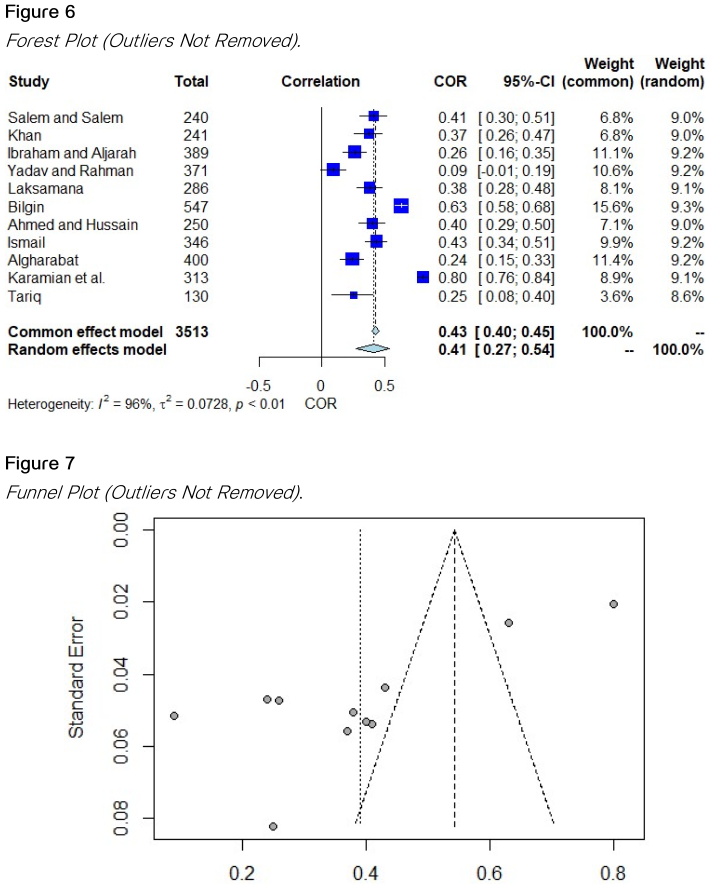Using R for Meta-Analysis in Business Research Context
Keywords:
Meta-analysis, PICO, PRISMA, R, meta Package, dmetar PackageAbstract
R is widely used to perform meta-analysis for international publication. However, R has been rarely used by Thai academics and researchers to conduct meta-analyses for research and publication. This could be viewed as a practice gap. Thus, the goal of this paper is to alleviate this gap by encouraging the Thai academic and research community to use R for meta-analysis in the business research context. This article will demonstrate that R is just as effective as other programs at performing a basic meta-analysis, and beyond. The article is divided broadly into two main parts: systematic review and meta-analysis. The idea of systematic reviews is explained in the first part of the article, which comprises two subsections. The primary goal of Subsection 1 is the application of SRQ (instead of PICO), a framework for precisely articulating the research question that serves as the basis for additional literature inclusion in the meta-analysis at hand. Subsection 2, which defines the criteria for accepting or rejecting studies to be included in a meta-analysis study at hand, deals with the application of PRISMA. The remaining part of the paper focuses on how meta-analysis is carried out in R, as well as related topics, starting with the import of datasets for analysis from an Excel file. Examples of R scripts are provided to conduct meta-analysis using R. Text outputs of all required statistics are generated, for example, pooled effect sizes in the form of common (fixed) and random effects for assessing the heterogeneity of studies included in the meta-analysis at hand. In addition, R can generate both forest and funnel plots. The paper also discusses how to use the funnel plot to determine the publication bias of the study. R is fully capable of doing comprehensive meta-analyses, being on par with or even surpassing other programs in some areas. Thai researchers and academics can utilize R with confidence. Thus, Thai researchers and academics are strongly encouraged to use R for meta-analysis and share their findings, like other international researchers.
References
Balduzzi, S., Rücker, G., & Schwarzer, G. (2019). How to perform a meta-analysis with R: A practical tutorial. Evidence-based Mental Health, 22(4), 153–160. https://doi.org/10.1136/ebmental-2019-300117
Cajal, B., Jiménez, R. M. M., Gervilla, E., & Montaño, J. C. M. (2020). Doing a systematic review in health sciences. Clínica Y Salud, 31(2), 77–83. https://doi.org/10.5093/clysa2020a15
Chananet, C. (2010). Using R program for meta-analysis. The Journal of Applied Science, 9(1), 28-38. https://www.journal.sci.kmutnb.ac.th/journal_files/3_1_2553.pdf
Dechpichai, P., Kongchareon, J., Suwanateep, N., Tuprakay, S.R., Pongsopa, J. (2017). Kham Chuk Nai Lok Phoom Phae Nai Dek Thai: Kan Vi Klo Apiman [The pooled prevalence of allergic disease]. Advances Science, 17(2), 78-98. https://sci.bsru.ac.th/sciweb/e-magazine/17-2/chapter-7.pdf (In Thai)
Dettori, J. R., Norvell, D. C., & Chapman, J. R. (2021). Seeing the forest by looking at the trees: how to interpret a meta-analysis forest plot. Global Spine Journal, 11(4), 614–616. https://doi.org/10.1177/21925682211003889
Dettori, J. R., Norvell, D. C., & Chapman, J. R. (2022). Fixed-effect vs random-effects models for meta-analysis: 3 points to consider. Global Spine Journal, 12(7), 1624–1626. https://doi.org/10.1177/21925682221110527
Feeley, T. H. (2020). Assessing study quality in meta-analysis. Human Communication Research, 46(2–3), 334–342. https://doi.org/10.1093/hcr/hqaa001
Gogtay, N. J. & Thatte, U. M. (2017). An introduction to meta-analysis. Journal of the Association of Physicians in India, 65, 78-85. https://www.kem.edu/wp-content/uploads/2012/06/14-An-introduction_to_meta_analysis-1.pdf
Harrer, M., Cuijpers, P., Furukawa, T. A., & Ebert, D. D. (2021). Doing meta-analysis with R: A hands-on guide. Chapman & Hall/CRC Press.
Ibrahim, B. (2021). Social media marketing activities and brand loyalty: A meta-analysis examination. Journal of Promotion Management, 28(1), 60–90.
https://doi.org/10.1080/10496491.2021.1955080
Linden, A., & Hönekopp, J. (2021). Heterogeneity of research results: A new perspective from which to assess and promote progress in psychological science. Perspectives on Psychological Science, 16(2), 358–376. https://doi.org/10.1177/1745691620964193
O’Rourke, K. (2007). A historical perspective on meta-analysis: Dealing quantitatively with varying study results. Journal of the Royal Society of Medicine, 100(12), 579–582.
https://doi.org/10.1177/0141076807100012020
Page, M. J., McKenzie, J. E., Bossuyt, P. M., Boutron, I., Hoffmann, T. C., Mulrow, C. D., Shamseer, L., Tetzlaff, J. M., Akl, E. A., Brennan, S. E., Chou, R., Glanville, J., Grimshaw, J. M., Hróbjartsson, A., Lalu, M. M., Li, T., Loder, E. W., Mayo-Wilson, E., McDonald, S., & McGuinness, L. A. (2021). The PRISMA 2020 statement: An updated guideline for reporting systematic reviews. British Medical Journal, 372(71). https://www.bmj.com/content/372/bmj.n71
Paul, J., & Barari, M. (2022). Meta‐analysis and traditional systematic literature reviews—What, why, when, where, and how? Psychology & Marketing, 39(6), 1099–1115.
https://doi.org/10.1002/mar.21657
R Core Team (2021). R: A language and environment for statistical computing. R Foundation for Statistical Computing. https://www.R-project.org/.
S, Moher, D. (2021). The PRISMA 2020 statement: An updated guideline for reporting systematic reviews. PLOS Medicine, 18(3), Article e1003583.
https://doi.org/10.1371/journal.pmed.1003583
Simmonds, M. (2015). Quantifying the risk of error when interpreting funnel plots. Systematic Reviews, 4(1). https://doi.org/10.1186/s13643-015-0004-8
Spineli, L. M., & Pandis, N. (2020). Fixed-effect versus random-effects model in meta-regression analysis. American Journal of Orthodontics and Dentofacial Orthopedics, 158(5), 770–772. https://doi.org/10.1016/j.ajodo.2020.07.016
Tatsioni, A., & Ioannidis, J. P. A. (2017). Meta-analysis. International Encyclopedia of Public Health, 117–124. https://doi.org/10.1016/b978-0-12-803678-5.00291-5
Wickham, H. &, Bryan, J. (2023). readxl: Read Excel files. [R package]. https://readxl.tidyverse.org

Downloads
Published
How to Cite
Issue
Section
License
Copyright (c) 2024 The Authors

This work is licensed under a Creative Commons Attribution-NonCommercial-NoDerivatives 4.0 International License.
All published content in JRM is licensed under a Creative Commons Attribution-NonCommercial-NoDerivatives 4.0 International License (CC BY-NC-ND 4.0).


